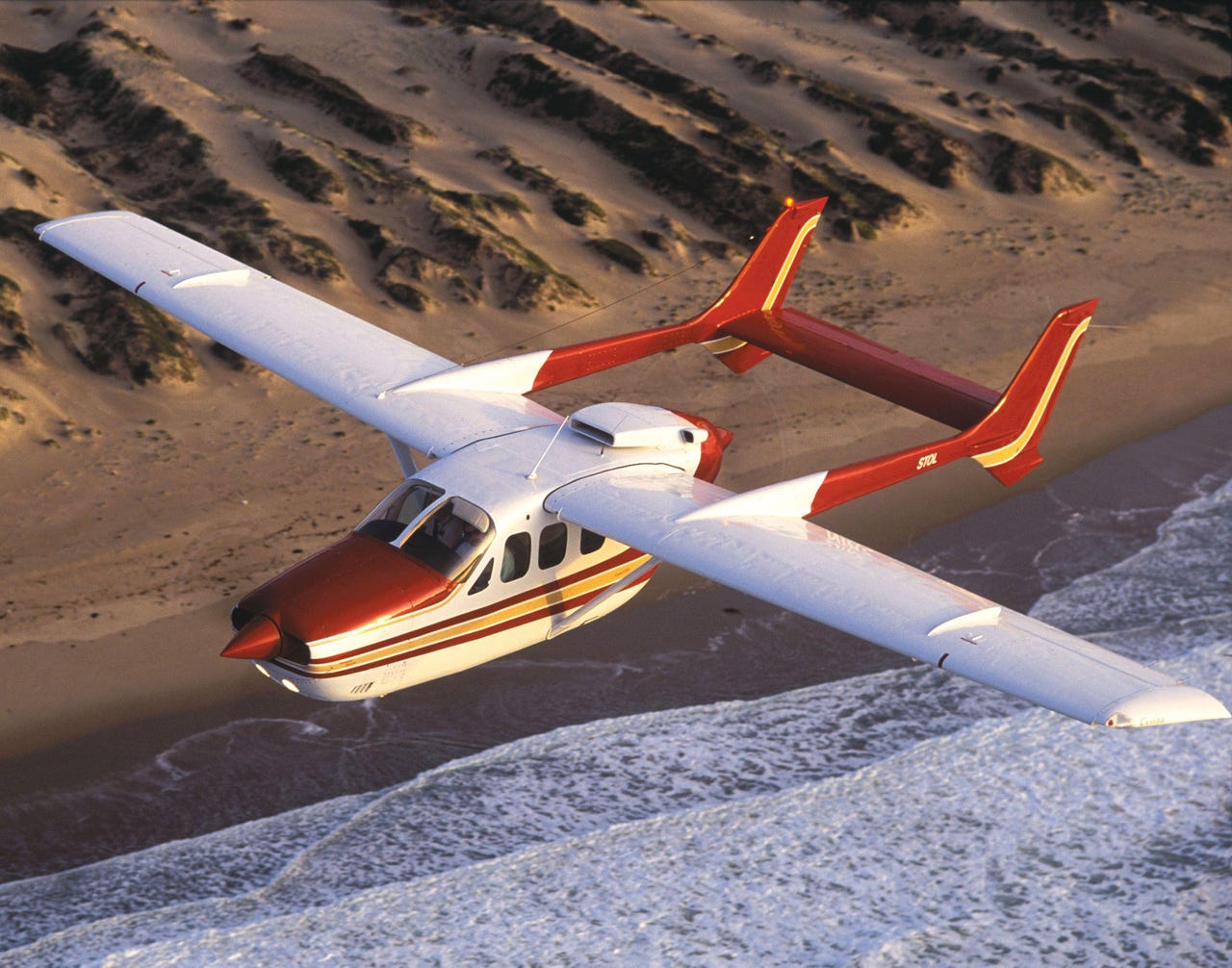Largest hybrid electric plane set to take flight


Not long ago, hybrids were novelties on roads around the world. The skies may be next.
Ampair, a Los Angeles clean tech company in my neck of the woods, is set to begin accepting orders for a hybrid electric aircraft at the EAA AirVenture airshow in Wisconsin next week. Dubbed the EEL, the aircraft is in fact a retrofit of a Cessna 337, an aircraft that has a forward-mounted prop engine that pulls and a rear-mounted prop engine that pushes. Ampair's retrofit will replace one of those internal combustion engines with an electric motor powered by batteries.
It's the latest example of a long-pursued goal of electrification in air travel. Aviation currently contributes 12 percent of all U.S. carbon emissions and 4.9 percent globally. With rising awareness of the threats of carbon emissions, there's been renewed interest in e-planes, with companies like magniX and Ampair racing to develop viable electric drivetrains.
Read this
Earlier this year magniX and a regional airline in the Pacific Northwest, Harbour Air, formed a partnership that could lead to the first all-electric airline. One potential advantage of electric aviation is savings. Currently, fuel accounts for 30-50 percent of an airline's operating costs.
But puddle jumpers converted to run all-electric have a limited range, and the weight/power ratio of electric motors coupled with heavy battery banks is far worse than internal combustion engines powered by liquid fuel. The technology is improving rapidly, but we're still likely many years away from seeing all but the shortest regional routes move to full-electric.
Ampair believes hybrid power may be a stopgap, providing fuel savings while still retaining many of the benefits of an internal combustion drivetrain.
"The Ampaire Electric EEL is the first step in bringing lower emissions, lower-operating costs, and quieter operations to general aviation through electrification," according to the company's CEO Kevin Noertker. "The original Cessna 337 provided great utility, and this hybrid electric conversion retains those advantages while reducing fuel cost and maintenance by about 50 percent."
The EEL is now undergoing a 30 month test program, which began in June. One of the tests will be demonstrating reliable single-engine climbs on each powerplant. Ampair expects the aircraft to be certified by 2021.
Ampair's EEL aircraft will seat four or six passengers. The company says the aircraft cost will be competitive with comparable piston twins.
"This is something new and exciting in general aviation—twin engine redundancy and performance on as little as 10 gallons per hour in cruise flight," said Noertker. "Plus the opportunity to reduce your environmental footprint and still enjoy the freedom and flexibility to fly as you wish."
Ampair believes retrofitting existing passenger aircraft to electric power is the quickest and most capital efficient approach to making commercial electric air travel a reality. The company is a portfolio company of the Los Angeles Cleantech Incubator.